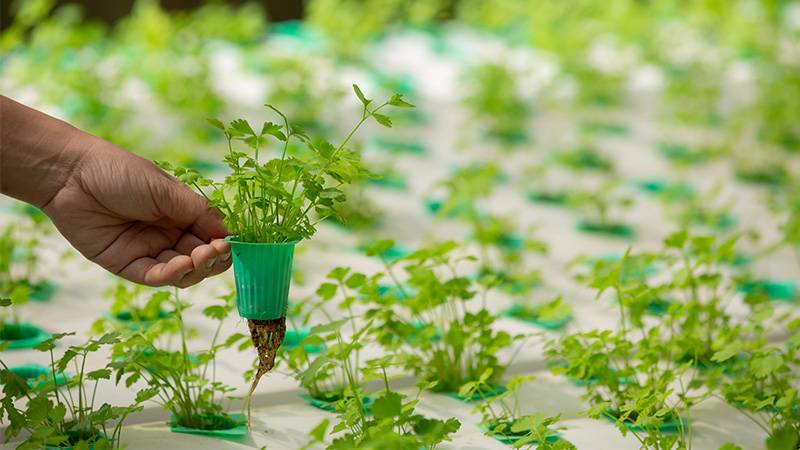In the face of escalating heatwaves that devastate crops, farmers and refugees in Libya and Jordan are turning to hydroponics, a revolutionary farming technique that offers a glimmer of hope.
Ubari, a remote oasis town in Libya, witnesses temperatures soaring past 50 degrees Celsius, prompting schools and offices to close for public safety. For local farmers like Khalifa Muhammad, this extreme heat threatens their livelihood, as the rising temperatures have severely impacted harvests over the past five years.
Libya, already grappling with the adverse effects of climate change, faces prolonged droughts, increased sandstorms, and worsening desertification. These challenges have led to unprecedented crop failures, jeopardizing the nation’s food security.
In response to these harsh conditions, Libyan farmers are increasingly adopting hydroponic farming. This innovative method involves cultivating crops directly in water, eliminating the need for soil. Moreover, the crops are grown inside temperature-controlled tents.
Muhammad, who has embraced this technique, attests to its benefits, noting that hydroponically grown vegetables are healthier, grow faster, and taste better than those cultivated using traditional methods. Since its inception in 2020, Green Paradise, a local initiative, has trained over 120 Libyan farmers in hydroponics.
Jordan, like Libya, is grappling with its own set of challenges. The Middle Eastern nation ranks among the world’s 25 most water-stressed countries. With populations consuming the entire available water supply, the agricultural sector is severely affected. Hydroponics, with its water-efficient approach, offers a viable solution. Alaa Obeidat, a farming consultant based in Amman, highlights that hydroponics uses significantly less water than traditional farming, as the water is captured and reused.
Given its reduced need for water, hydroponic farming needs no arable lands, explains Abdallah Tawfic, Cairo-based co-founder of Urban Greens Egypt. “The plants are elevated from the ground and are grown in special substrates, while getting the nutrients in a liquid form,” he notes. This makes such a method of planting ideal for Libya, where about 95 per cent of the country is desert and less than two per cent of its land gets enough rain to support traditional agriculture.
In Libya, where nearly 95% of the land is desert and only 2% receives sufficient rainfall for traditional agriculture, hydroponics is an ideal alternative. The country’s reliance on underground aquifers for irrigation is further strained by extended heatwaves and reduced rainfall, which have dried up major dams, including Wadi Kaam.
In 2021, UNICEF raised alarms about potential water shortages affecting over 4 million Libyans. To address these challenges, Green Paradise, founded by Seraj Bisheya and Mounier Banot in 2020, equips farmers with hydroponic techniques and water-saving systems.
In Jordan, where farmers face dwindling water supplies and reduced arable land, hydroponics offers a lifeline, especially for refugees. With a third of Jordan’s 11 million population comprising refugees, many rely on agriculture for income.
Mohammad Syam, a Palestinian refugee, introduced hydroponic farming to fellow refugees, training them through his company, Senara. According to Euronews, the initiative has trained 49 refugees in hydroponic gardening and installed 164 rooftop systems, primarily in densely populated refugee camps.
However, the transition to hydroponic farming is not without challenges. The initial setup costs, largely due to imported components and the need for refrigerants, can be prohibitive. For instance, setting up a single hydroponic tent in Libya costs around €1,344. While some farmers have secured grants from international organizations to offset these costs, the high upfront expenses, coupled with a lack of awareness and regulatory guidance, hinder the widespread adoption of hydroponics in the Middle East and North Africa region.
Despite these challenges, the popularity of hydroponics continues to grow in the region, offering a sustainable solution to the pressing agricultural challenges posed by climate change.
More inspiring green news similar to this:


